The challenge
It just so happened that while explaining the role of the common resistor Rgain in the input stage of the three op-amp instrumentation amplifier in a related question, I came here on this two op-amp circuit with a common gain-setting resistor Rg. Drawn in this perplexing manner, it appeared to me perfectly unfamiliar, and this caused me to try to discover what idea was hidden in it.
The common idea
Today, I thought about it almost all day and finally managed to see the general idea that connects the seemingly different circuit solutions of instrumentation amplifiers:
The input part of op-amp instrumentation amplifiers consists of two non-inverting amplifiers coupled by Rg.
The implementation
In the three op-amp circuit, the bottom resistors of the voltage dividers constituting the negative feedback network are connected by Rgain (Rg) "in series" while in the two op-amp circuit they are connected "in parallel" by Rg. Let's see what are these non-inverting amplifiers in the second circuit.
The bottom op-amp and resistors R3 and R4 form the first non-inverting amplifier. The top op-amp and resistors R1 and R2 form the second non-inverting amplifier. Their "following outputs" (the common points between dividers or op-amp inverting inputs) are coupled through Rg.
Operation
In the common mode, the
two ends of Rg follow the input voltage variations of SEG- and SEG+ (figuratively speaking, they simultaneously "move"). So the voltage drop across and the current through Rg do not change. As though there is no resistor Rg connected between the voltage dividers (the name of this technique for artificial resistance increasing is "bootstrapping"). The two stages cooperate and the stage gain is minimum.
In the differential mode, one of Rg ends "freezes" or contrary "moves". Rg appears and connects in parallel to the divider's bottom resistor. The two non-inverting amplifiers counteract each other and the gain is high.

